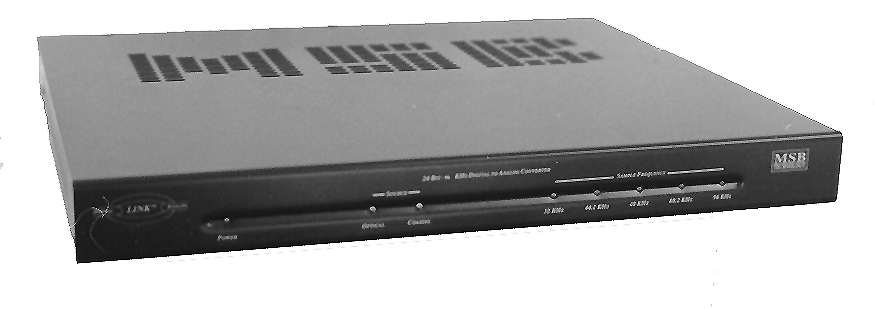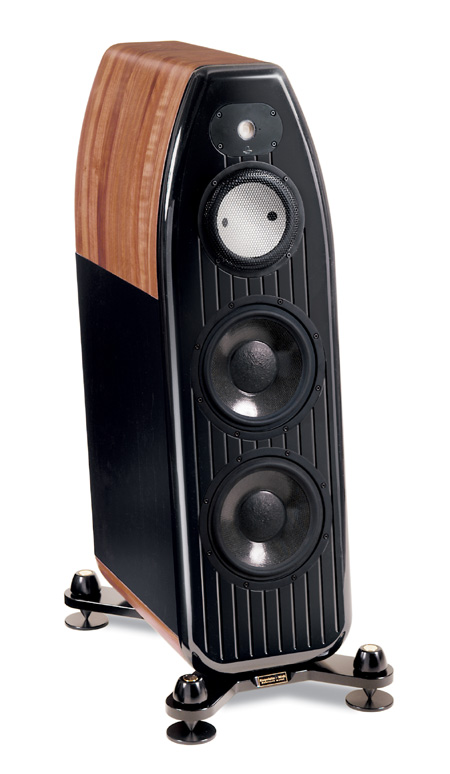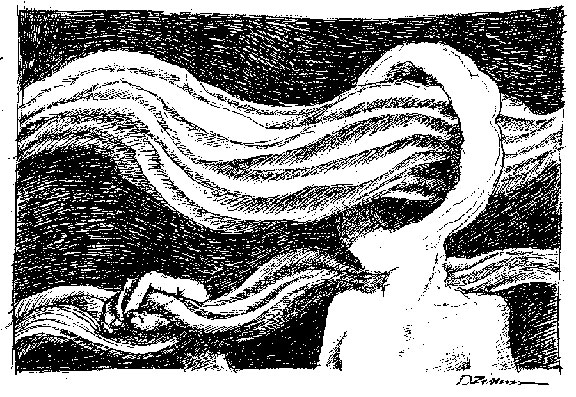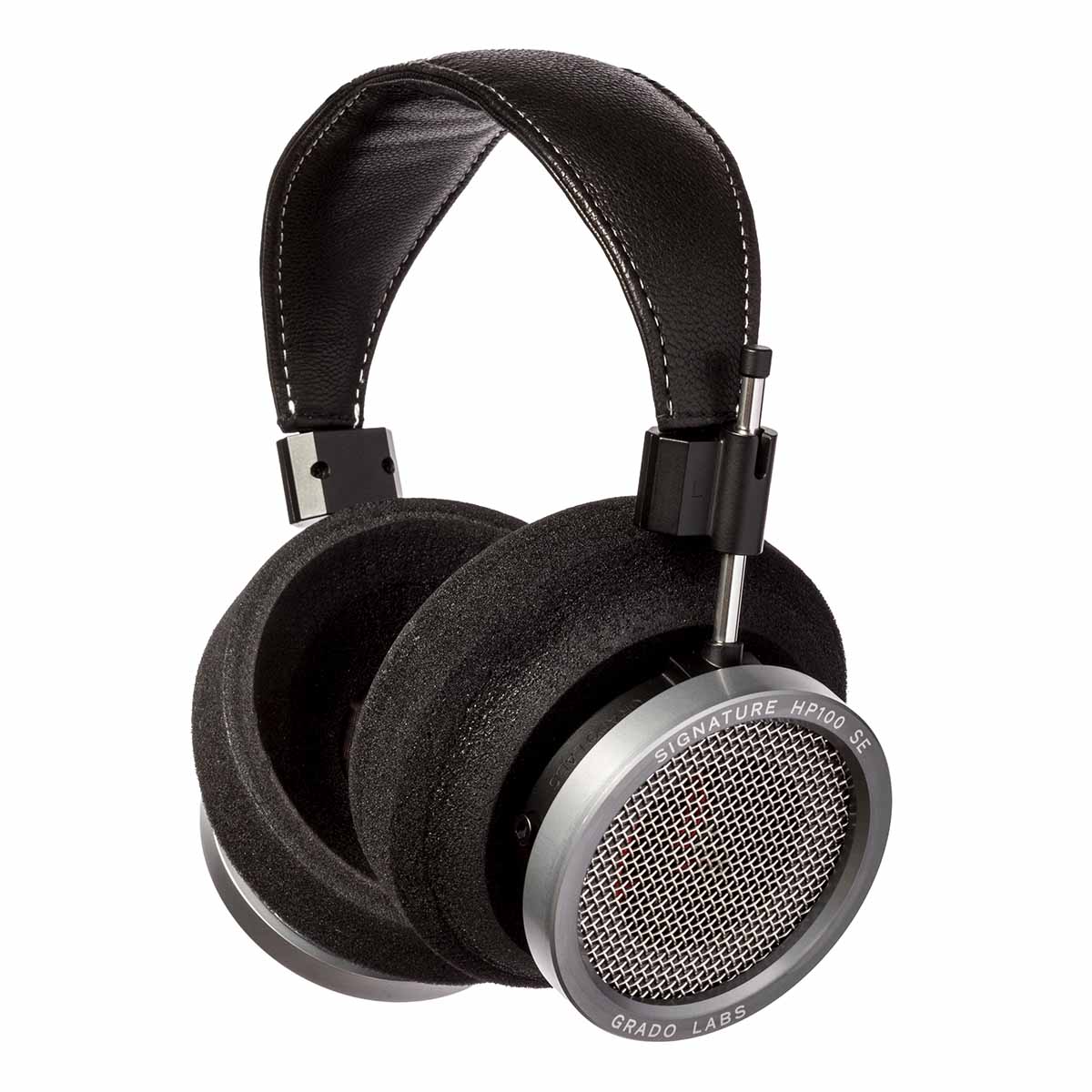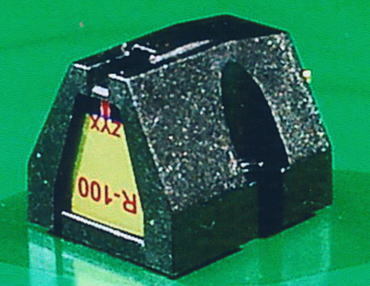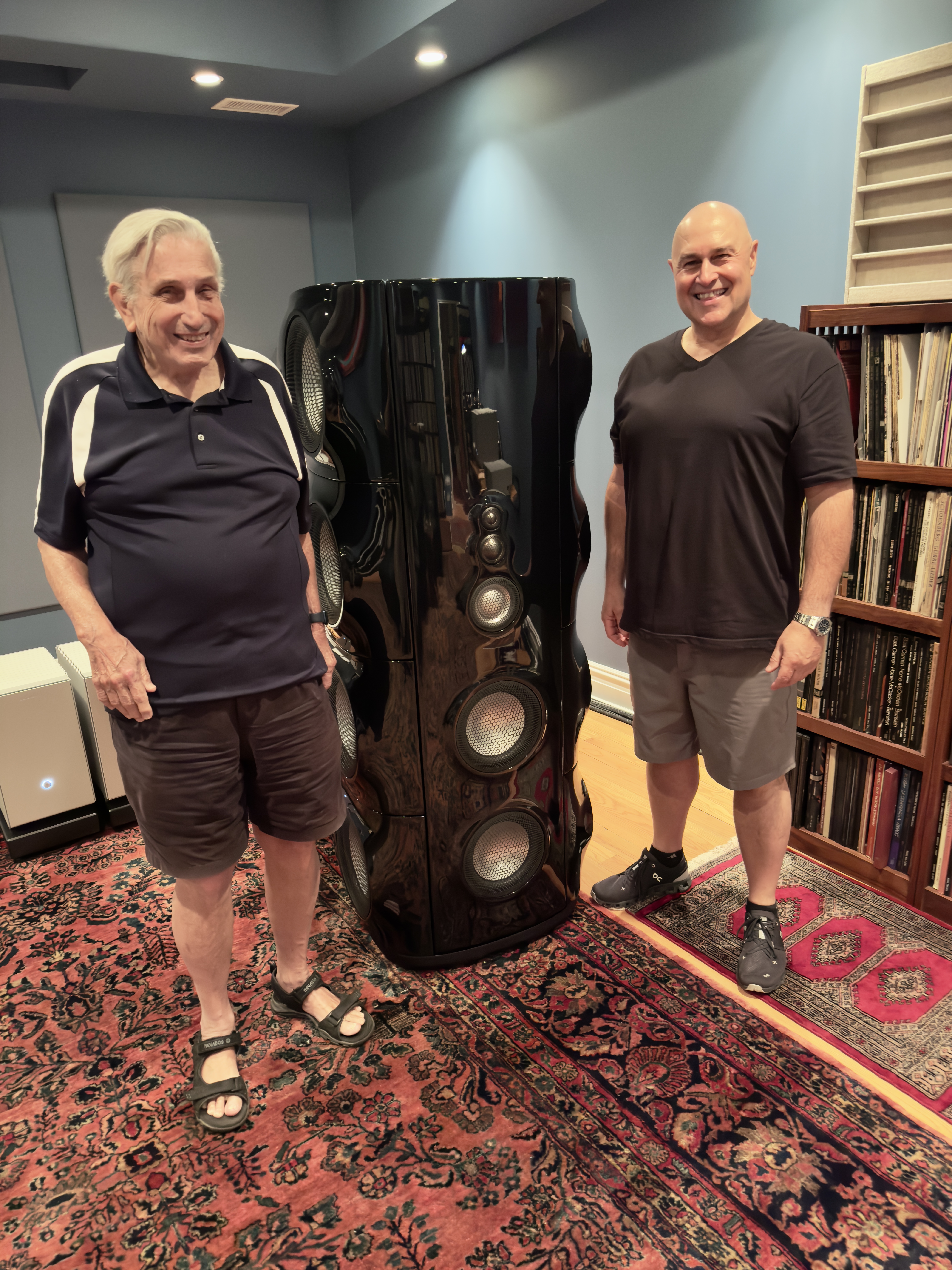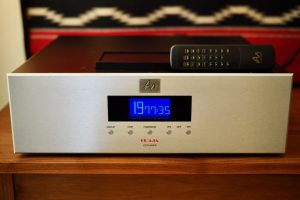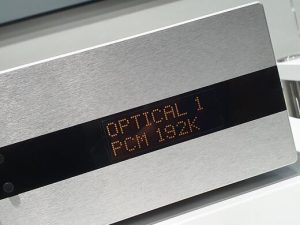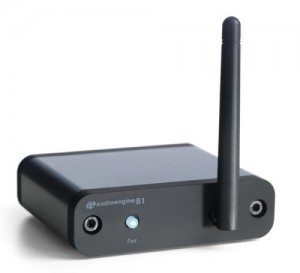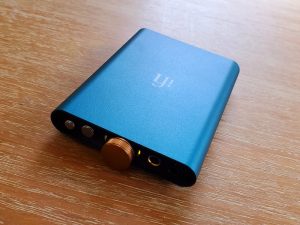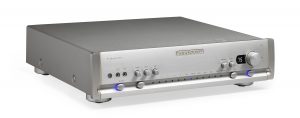This article, by Dave Clark, Larry Cox, Francisco Duran, and Lauren Stephens originally ran when audioMUSINGS was in print - Issue 10, 2000.
The MSB Link DAC II 24/96 comes into our home at a very interesting time. As the audio world begins to move to a more refined digital format (24/96, DVD-A, and SACD, none of which are compatible with each other), we find ourselves looking at our vintage EAD 1000 II DAC with a sense of urgency. How much longer before we find that what has served us so well for many a year has been made obsolete? The reality, however, is that as long as you own 16/44.1 CDs, your DAC or CD player is never really obsolete—it's just not capable of playing the newer CDs, whatever format those may be. On the other hand, basic technology moves on, and as good as the EAD 1000 II was in its heyday, it may be surpassed by less expensive DACs today.
Which brings me to the $399 MSB. As good as my current digital setup is?the EAD with Sahuaro Slipstream power cord and Shakti Stone feeds analog signals via Nordost SPM cables to the HRS unit, which uses the Clayton AC cord; the HRS unit then sends analog signals to the BC3 preamp—the MSB DAC, in absolute terms, was simply more enjoyable. That's $399 versus $2400! How can this be? Well, quite simply, the MSB is a killer DAC that uses the latest chips, a minimal circuit layout, and a very good analog output stage, all of which is no doubt better than what is in the vintage EAD in many ways, even when the EAD is mated with the HRS unit. (I use the EAD running into the HRS unit on the principle that the HRS has a better analog output stage than the EAD, and as such can offset some of the EAD's shortcomings. Then again, I am sure SCE, the makers of the HRS, see the unit more as a harmonic restoration, impedance matching device, which is what it really is, but I just like what it does when used as an output analog buffer for the EAD. The EAD does not sound as musical without the HRS.)
As I said, in absolute terms the MSB does sound better than my EAD combo, though not in every respect. Before I go into the whys and wherefores, let's cut to the audiophile checklist. The EAD rig has more treble extension and is a touch sweeter. It is also more laid back and relaxed. The MSB, on the other hand, provides a more visceral sound that is larger and more enveloping. Bass is deeper and more forceful, with an astonishing attack. The midrange is more tactile and richer, with greater dimensionality. Images possess more life and palpability than heard through the EAD rig. With the MSB, the treble is a touch whiter... okay, make that grainier—and there is less air. There's less ease or elegance to the sound. But consider all that one gets for the price of admission. What really sparks my interest is that if the MSB can do all this for $399, imagine what a few mods or parts upgrades can get you? MSB offers just that to its customers, as do other companies on the net.
We listened to a very wide range of music... ambient, guitar noise, electronic, drum and bass, pop, dub, jazz of all genres, weird folk, industrial, ethnic, gothic, etc. Whatever we played was more involving with the MSB. Dynamically, rhythmically, emotionally, you name it! The MSB was just more fun to listen to. It never caused me not to want to listen to music. As a matter of fact, with the MSB, all I wanted to do was listen to music. I wanted to listen to disc after disc, whereas with the EAD rig, my limit is just two or three discs. Heck, I wanted to BUY more music with the MSB here. I know I felt much the same when we first added the HRS unit to the system, but it never made our music sound this good. This is not to fault the HRS, but to point my finger at the EAD. I did try the HRS unit on the MSB. Differences were not readily apparent. With or without the HRS, the MSB sounded just great!
With the MSB, you get a lot for $399. As a matter of fact, it is hard to beat for under $1000. As you spends more, you will get more musical refinement, greater treble purity and naturalness, more inner detail, more continuousness in the sonic tapestry, and finer delineation of micro and macro-dynamics. I would like the MSB to have better cosmetics, a better power supply, 192kHz sampling, and... oh, sorry, I forgot it's only $399. Buy one and enjoy your music. At this price you can't go wrong. Dave Clark
I waited with great anticipation for MSB's Link DAC to come my way. Just about everybody in the audiophile community has at least heard of this product, and now it was my turn to have a go at it. Before you even open the box, MSB's message is clear: Fun, Fun, Fun. Completely covering the top of the box is a picture of the Space Shuttle mounted on its Saturn 5 rocket, blasting off in billowing smoke and flames. What a way to start off! Upon opening the box, I found more surprises. This is a solid unit, all 16 pounds of it. The Link DAC offers a lot for your cash. Some of the features that stand out are sampling rates of 96, 88.2, 48, 44.1, and 32 kHz, and automatic switching of inputs. Optical and coaxial inputs, along with two chassis-mounted RCA jacks for an analog pass-through are included. For you capacitor-in-the-signal path haters, there aren't any. The DAC comes supplied with a small outboard power supply, and as far as I know you have the option of upgrading to a larger one. I didn't open the unit up as I usually do, but I hear there is plenty of room inside for options such as MSB's Virtual 3D surround sound add-on, and for tweakers to get at the main circuit board.
Before putting this unit in my system, I made sure it was broken in. I ran my Soothing Sounds for Body and Soul—The Ocean CD through the DAC for a few 12-hour sessions while I was at work. This CD contains nothing but the sound of waves gently breaking on the shore. It is rumored by good sources to break in electronic products of all kinds in half the time needed by the official break-in CDs. I got mine at The Warehouse for $3.99.
One of the strengths of the Link DAC is its soundstaging ability. On the famous Muddy Waters, Folk Singer CD on Mobile Fidelity, the fullness of the stage is quite impressive. Obscure soundstage cues came through with clarity and dimension. Slight inflections in Muddys voice were clearly heard. Buddy Guy's acoustic guitar work also benefited from this, not only on the Folk Singer album but also on his album with Junior Wells, Alone and Acoustic His Guitar sound was naturally placed in space. I also noted the way sounds came directly from their origin. Well's harp was emanating at a starting point by his head and not all over the place. Guy's guitar sound actually seemed to be coming straight out of the instrument's air hole. A CD I haven't spun in a while is the soundtrack to the PBS TV series, Columbus and the Age of Discovery, on the Narada Cinema label. Sheldon Mirowitz composed the music, a New Age-meets-Middle Eastern-meets-Spanish mix. I enjoyed the TV series very much and thought that the music served the visuals quite well. Admittedly, most of the time when this disc is spinning I'm doing household chores. Once in a while, though, it serves reviewing purposes. As the Spanish guitar started off track 6, the sound had a clear distinct snap to the strings. A flute follows, then the percussion joins in with sharp stopping and starting points along the way. The image of the guitar was placed dead center in front of me, with the rest of the instruments clearly defined. Guitars, though, didn't sound as full-bodied as I felt they should be.
The natural sense of depth and layering to the music that the Link DAC gives was especially noticeable on Chesky's 24/96 recording, Love Drum Talk by Babatunde Olatunji. This music is Percussion City, the likes of which are heard left to right and layered back into the stage. On the Olatunji CD in particular, the instruments sounded as if they were coming from a 3D space. My EAD DAC is has a pretty dimensional stage, but the images themselves don't flesh out in as real a space as that from the MSB. It's as though the EAD gives you a 3D stage with 2D performers. With the MSB, Olatunji's percussion was full and clean. Dynamic shifts were very well-reproduced, and transients were fast. In fact, the MSB's pace was a few steps ahead of my EAD. This is a plus for the MSB in my book.
On dynamic peaks like massed strings, I noticed no compression or strain. Pretty good, I thought, concerning the small outboard power supply that comes with the MSB. The 2 volt output was enough to drive my passive line stage. The Link DAC has pretty good bass performance. I felt its mid bass was better than its low bass, but since my speakers are not exactly low bass champs, what the heck. The bass you do hear is solid, and the music moves along at a very good pace. One area where I felt this DAC showed its $399 colors were in the upper mids to treble region. Cymbals had less of a natural sheen, and a whiter sound. This was noticeable on another Mobile Fidelity disc, John Klemmer's Touch, which should have no such anomalies. Also, Klemmer's sax sounded thinner and slightly squeezed in comparison to my EAD, which is more laid back in its overall presentation, but has rounder and fuller mids and is not as bright or thin in the top end. On the EAD, cymbal rides float across an airier, richer stage. The sound is also a lot sweeter. Poorly recorded discs did not fare as well on the Link DAC either. My threshold of pain for these kinds of discs was a lot longer with my own DAC than with the MSB, though I should remember the price difference at this point. I should also remember that my EAD has been under the Musical Concepts soldering gun for a mod, to great improvement.
I thought I would slap my Monarchy DIP on the end of the Link DAC to see what would happen, and it turned out to be a good idea. With the DIP installed, low-level details were definitely cleaned up. The music's trailing edges faded out farther into the background, and more naturally. The sound was a tad cleaner and clearer. These are the same improvements I get when the DIP is installed on my EAD.
I also made a quick comparison of the MSB to the Source Component Harmonic Recovery System. I hooked the HRS after the Pioneer DV414 DVD player to do so. First of all, my experience with the HRS has showed me that the sound you get greatly depends on what you feed it. This sounds obvious, but seems to run contrary to what I read and hear what people say about this unit. It does improve the harmonics and sound to whatever it is hooked up to, but I could still hear the basic character of both my stock Pioneer PD54 CD player and the DV414 through the HRS. In any case, I liked the DV414 better as a transport. My old PD54 has a slight but noticeable sibilant coloration to the midrange. Overall though, the HRS and Pioneer DV414 combo had the best bass of all the units. The mid band was more full and the top end somewhat darker compared to the MSB. By the way, with the DV414 I could never get the MSB to process 96kHz—it would stop at 48. I think the DVD player must be responsible. I would have to check with Pioneer to be sure, but didn't get a chance to do so.
The Link DACc retails for $399, and look at all you get. It is one solid, good looking, well built box, with loads of useful features. It may not be blowing down the doors of the Levinsons and Thetas of the world, but it is very competitive for the price. The Link DAC will improve a heck of a lot of low- to mid-priced CD and DVD players out there, way beyond the capabilities of a stand-alone El Cheapo unit. Definitely check this one out to put some fun back in your audio life. Francisco Duran
I've read in places on the net (and I'll bet you have, too) that the $400 MSB Link DAC II competes with DACs and all-in-one players up to $2000. Is it so? Is it wishful thinking? In my opinion, these statements are true, but you may not think so.
I recently sold my CAL Icon MkII and bought a Pioneer DV525 DVD player. Why? Well, more resolution than with the Icon. It is not as sweet, certainly, or as three dimensional, and it's slightly less rich and palpable, but it is much more resolving. Also, the Icon refused to work with outboard DACs. With all the DACs I tried, the Icon sounded better alone, so I stopped experimenting. Why pay for no improvement? The Pioneer, I reasoned, could act as a transport and decode 24/96, because that is the next format, right? Well, I feel a little foolish, because DVD-A isn't here and DSD seems to be gaining some credibility as the next format, and here I am, owner of a Pioneer DVD player, testing out a DAC that is more expensive than my "reference" player. Compared to the Pioneer as an all-in-one player, the MSB was a step up—not, frankly, a huge one, but a step up. Neither the Pioneer nor the MSB will satisfy soundstage nuts. Not only aren't images "real" sized, but they are two dimensional. Oh well.
The overall impression of the MSB in my system was that it made things more analogue-like. More delicacy, except for the top end. I found the MSB rolled off there, even more so than analogue. While the top end may not be as satisfying as other units, including perhaps the Pioneer as a stand-alone unit, the rest of the presentation was more delicate, refined, and sweet-sounding. Pioneer owners, belly up to the bar for the Link DAC II. If your system is a little bit hard sounding or etched, the MSB could be the answer to your prayers. If your system is a little soft already, I think I'd steer clear of the MSB—while it adds a nice bit of sweetening to the sound, it may make things too indistinct and too soft. On the other hand, at only $400 it is a genuine high-end product.
I corralled an Arcam CD 9 and an Audio Aero Prima CD player (6922 tube in the output stage) and tried these $1500 players against the MSB/Pioneer to see whether comparisons were appropriate, or even fair. I found that the MSB did compete with these players, but it wasn't better, or even as good. If you have the dough, go for either of these players. You'll have only one box, one power supply to plug in, and one less set of interconnects to buy, and it will sound better than the MSB on virtually every front. But it won't sound THAT much better. The improvements showed up for me in increased listening time, a slightly more relaxing experience, and simply less work to listen. That could be worth paying for, and would be my preference.
The Arcam had deeper, richer bass than the MSB, with a greater sense of timbre and resolution. It sounded more like live music in an intimate setting—lots of detail and tonal cues suggesting the real thing. The midrange was also richer, coupled with a dimensionality that neither the Pioneer alone nor the MSB-yoked Pioneer could touch. The top end of the MSB was slightly rolled off in my system in a way that surprised me. Typically, Yugo-priced giant Killers offer lots of detail—unrefined detail, harsh detail, but lots of detail. This was not so of the MSB, which was a welcome relief. So again, if your system is a bit sharp on top or overly etched, the MSB could be a good upgrade.
Comparing the MSB to the Audio Aero Prima highlighted the two-dimensionality of the less expensive DAC and the openness of the more expensive one. The 6922 tube in the Audio Aero gave a dimensionality to the sound that eclipsed the Arcam, though not by much, and thoroughly stuffed the MSB. The Prima's bottom end was also fuller, though a bit euphonic and underdamped. Those who have speakers with a loose bottom end presentation might prefer the Link DAC. The Prima's top end was slightly more extended, but much more open sounding, and timbre was simply a step up, in a way that put human skin around voices.
For this listener, the MSB Link DAC II competes with the big boys, but doesn't win. Hey, for a quarter of the price, what do you expect? If you are a stereo imaging guy, this may not be the product for you. However, with a system that is highly resolving, rather than euphonic and overly sweet, the MSB Link DAC II could be a great choice. The Link DAC is not a giant killer, but it should give the big boys a bad headache. Larry Cox
In every article I've written for audioMUSINGS so far, I have admitted to knowing practically nothing about high end audio, so there is no point in me stopping now! When I hit the CD player level of this adventure, I once again had to get educated about the differences between regular consumer models and high end models. Strangely slow to learn, I didn't think the player mattered nearly as much as, let's say, the amp or the speakers. Obviously, all I had to do was listen and compare. I still don't know why high end players are so much better than consumer players, and I don't care?A good player gets the magic out of a recording. I do understand that high quality digital sound is all about information, both in the recording and in the ability of the DAC to translate that recording accurately. So I bought the best CD player my taste and budget could afford, a Meridian 506. It's warm and groovy, the soundstage is wide and deep, focus and definition of characters are good, not great, but those things are compensated for with the overall largeness and liveliness it gives me.
The MSB DAC handles sample rates up to 96kHz. I immediately assumed that the MSB is geared primarily for DVD/satellite use. I don't have a DVD player, so I was less than enthusiastic about comparing the MSB DAC to my Meridian. From the outset it didn't seem fair to compare an $1800 music-only player to a $400 multi-use DAC. I wanted to be able to give it a fair shot, and wished that I had a good consumer-level CD player or DVD player here to compare it to. With that said, I hooked up the DAC and let it warm up for a couple of days. It is a solidly built, good-looking piece of equipment. Across the front panel are LEDs which let you know what sampling rate it's using. Only having CD capability, I only saw the 44.1 light. Using my Meridian as a transport, I listened for a few days. In an attempt to be even handed, I gave the MSB DAC a lot of my time.
My most profound observation is that the MSB Link DAC is less musical than my Meridian. During "Never Going Back Again" (Fleetwood Mac, Rumours), the MSB has good outline of players and decent focus. I hear detail in the guitars, snare, and cymbals, but it's like the instruments are playing by themselves, and because of that I was left feeling detached during the song. During "Go Your Own Way," things fell apart. I lost quite a bit of bass, so it sounded sluggish. This is a fiery song, but I wasn't even getting warm with the MSB's rendition of the song. It seems overwhelmed and bogged down with all that's going on. Thinking that the problem might be with the Rumours album, I decided to try some music that is more acoustic in nature, so I threw on Son Volt's Trace album. The first song, "Windfall," has good detail and focus but the missing bass killed the song. It was like a train struggling to leave the station. Next I tried Muddy Waters' Folk Singer, and Muddy ended up sounding like a whiner instead of the greatest Blues man that ever lived.
With time to reflect, this player reminds me of a lot of pro gear I've heard. It's functional, but not delicate. Because of this I have had trouble getting through most songs, especially anything that isn't simple and acoustic by nature. I'm left wondering how it would help a consumer-level player. Or better yet, I bet this DAC works better with soundtracks on DVD, which are far less musical by nature. And I'm sure that many DVD consumers are thrilled with the idea that they can get up to 96kHz worth of information with the MSB Link DAC for such a rock bottom price. I was left feeling that I couldn't give it a fair shot. Lauren Stephens




